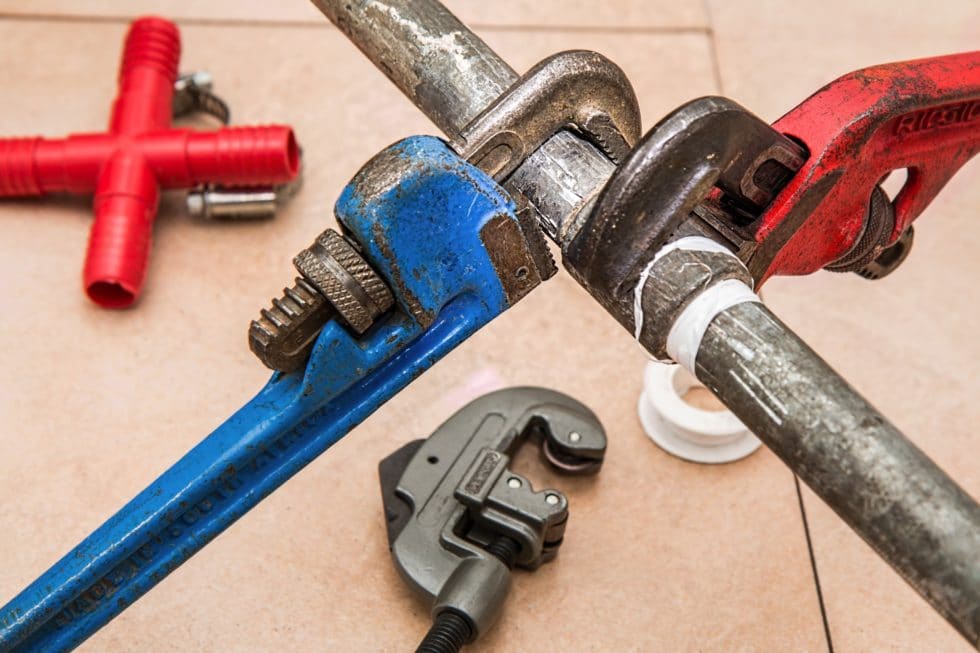February 16, 2022
Blog
Jeffrey Steeves

Must-Have Plumbing Tools
Did you know that fixing easily corrected household water leaks can save homeowners about 10 percent on their water bills? Owning a home means having to face inevitable plumbing problems! Be prepared for any minor plumbing problem by having these basic plumbing tools.
1. Plunger
It may be the most obvious, but a plunger is an essential plumbing tool for every homeowner. Plungers are helpful when you have a clogged toilet, but did you know a plunger can be used for a clogged shower drain? A plunger is an inexpensive tool that will help you get out of some minor plumbing problems!
2. Drain Snake
Does your sink or shower not drain properly? The solution could be just a simple drain snake away. A drain snake, or plumber’s snake, is a flexible auger used to dislodge clogs in plumbing. A drain snake is a simple plumbing tool that will allow you to clear debris like hair and product buildup without damaging your pipes.
3. Wrenches
Adjustable wrenches are an essential tool in any home plumbing toolkit. There are two types of wrenches that are particularly helpful when it comes to dealing with common plumbing.
- Pipe Wrench: A pipe wrench is a heavy-duty wrench that is good for gripping and turning pipes. Its adjustable jaws make it easy to use by gripping one way and sliding in the other.
- Basin Wrench: A basin wrench is a wrench with a long handle and jaws at the end. It’s used to tighten and or remove the faucet and fill valve lock nuts. It can be very useful in a plumbing pinch!
4. Heavy-Duty Rubber Gloves
When dealing with pipes and plumbing, rubber gloves can be an overlooked yet essential tool. Keep your hands, wrists, and forearms clean and protected from sharp objects by wearing rubber gloves when dealing with household plumbing issues.
5. Slip-Joint Pliers
Have you lost a wedding ring down your kitchen sink drain? Slip-joint pliers can save the day. Slip-joint pliers are useful tools for both bending and gripping in tight plumbing situations. With two sets of teeth, slip-joint pliers are a versatile tool to keep on hand. They have the ability to grip small objects like nails or grab bulkier objects like bolts.
6. Thread Seal Tape
Thread seal tape is also known as PTFE tape, plumber’s tape, or Teflon tape. This tape is good for sealing pipe threads and other plumbing leak necessities. If you have a leaky pipe, consider using thread seal tape to temporarily fix the leak to avoid further water damage. In some cases, thread seal tape can be used to solve the issue. Household leaks can not only cause damage and increase utility bills but also lead to water waste. The average family wastes 180 gallons per week from household leaks according to the EPA. Consider the thread seal tape in your plumbing toolbox as a way to combat this problem.
7. Tape Measure
The last plumbing toolkit essential is a basic tape measure. When dealing with plumbing you’ll often need to take exact measurements to ensure correct repairs in tight spaces. A tape measure will help you avoid costly mistakes due to incorrect length or distance in your home repair.
Don’t Have These Basic Plumbing Tools?
If you have a plumbing problem and are without these 7 basic plumbing tools don’t worry. Contact us at alpha-plumbing.com today for all your home plumbing needs.…

:max_bytes(150000):strip_icc():format(webp)/Plumbing-pipes-GettyImages-171591945-58ec198f5f9b58ef7ed089f8.jpg)
:max_bytes(150000):strip_icc():format(webp)/auger-59fd3b2313f1290037ecba67.jpg)
:max_bytes(150000):strip_icc():format(webp)/FlangePlungers-59fd3c35482c52001a3fe1c4.jpg)
:max_bytes(150000):strip_icc():format(webp)/CupPlunger-59fd3c90aad52b00379afac3.jpg)
:max_bytes(150000):strip_icc():format(webp)/PlumbersTape-59fd3d4bda27150037ad7e35.jpg)
:max_bytes(150000):strip_icc():format(webp)/Channel-Lock-59fd400dda27150037ae154c.jpg)
:max_bytes(150000):strip_icc():format(webp)/AdjustablePipeWrench-59fd407b9e9427003cbcbee5.jpg)










